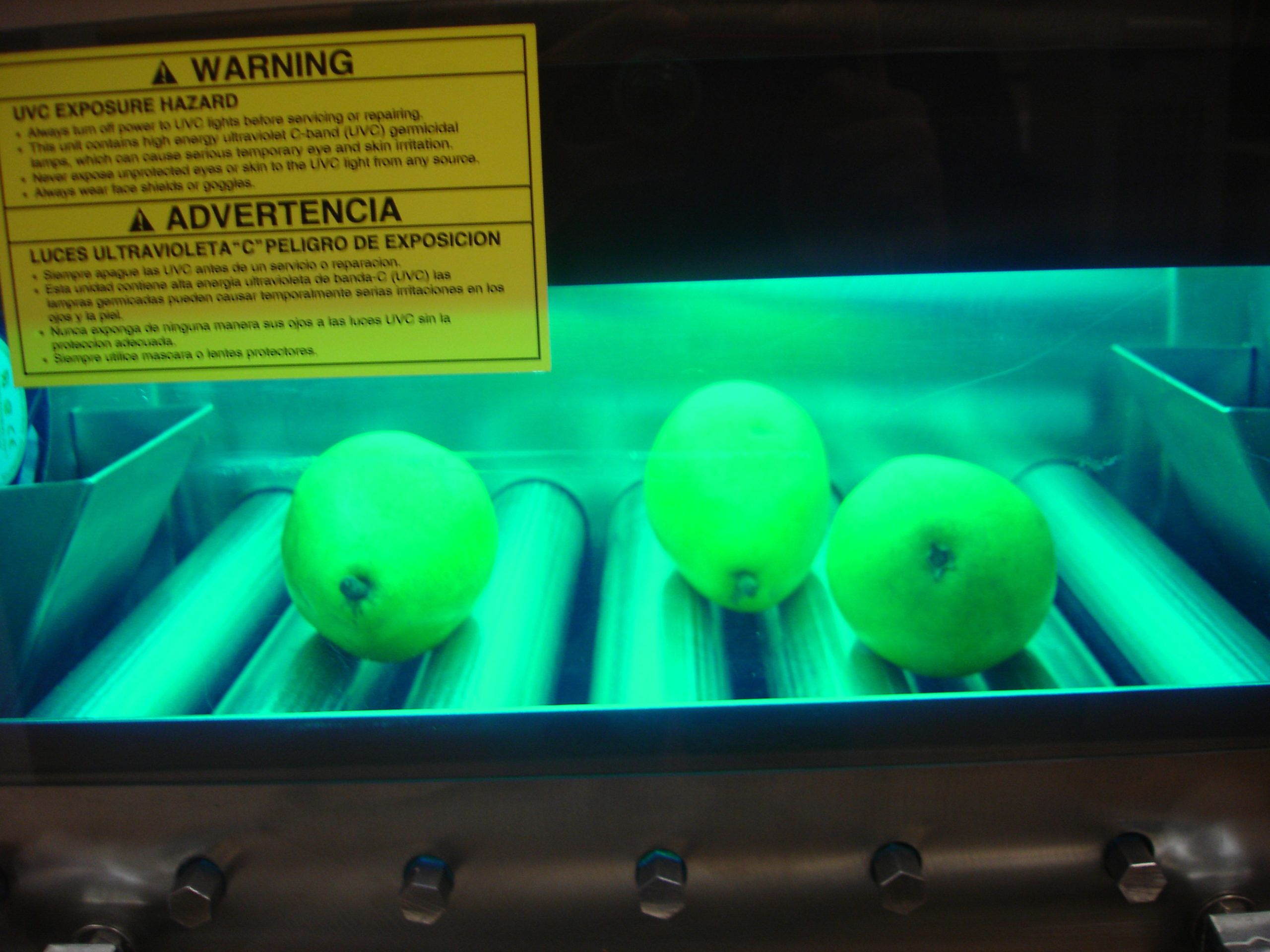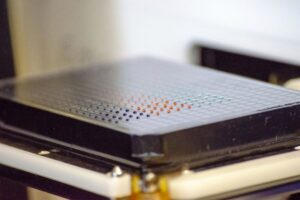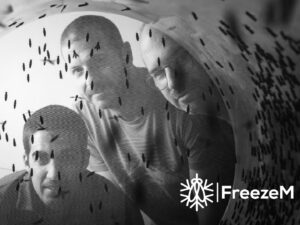Until recently, organic fruit producers haven’t had many options when it comes to sanitization.
For conventional producers, washes including chlorine and other chemical-based methods are used to remove harmful microbes from the fruit’s surface. Finding a solution that offers the same level of efficacy without compromising organic producers’ dedication to reduced chemical use, has been a critical mission for the organic fruit producers industry.
As if this pressure wasn’t enough, the Food Safety Modernization Act is upping the ante when it comes to food sanitization requirements. “If you look at FSMA, the producers and growers will need to ensure the safety of their produce and the laws are starting to take effect,” says Sablani. “Now, the fresh produce industry has become more tedious about protecting fresh produce.”
Over the last few years, a number of high-profile reports involving people becoming ill from consuming fresh produce contaminated with food-borne pathogens have increased public concern and led the FDA to include stricter requirements for fresh produce in FSMA. The number of foodborne illness outbreaks linked to fresh produce has increased in recent years. “So, the fresh produce industry is becoming more attentive to this issue and now they need to ensure the safety of the produce.”
A group of researchers at Washington State University have been working with Ultraviolet C light, or UVC light, to help organic producers make sure their produce is safe without having to use any chemical-based sanitization products.
“UVC technology is being used in the industry to sanitize air, water, and food contact surfaces,” Washington State University food engineer/technologist and project leader Shyam Sablani recently told AgFunderNews. “The main inspiration for applying this to organic fruit came about when we were interacting with some local organic fruit producers and learning about the difficulties they face with sanitization. They were keen to know whether there was a physical process that could sanitize the surfaces on organic produce.”
After obtaining a research grant from the Center for Sustaining Agriculture and Natural Resources, Sablani and his team set to work figuring out how to apply UVC light in an organic fruit operation. The team recently published their findings in the International Journal of Food Microbiology.
UVC light is an electromagnetic radiation but it lacks energy to ionize atoms unlike x-rays and gamma rays. “UVC light, has minimal or no effect on chemical and physical quality of fresh produce tested in our study by,” says Sablani, who earned his doctorate in Food Process Engineering from Canada’s McGill University.
As the fruit passes through the light, the UVC rays render the microbes inactive or prevent them from reproducing by damaging their DNA. The light cannot penetrate opaque or solid objects and has a shorter wavelength than ultraviolet A or B light.
After conducting trials on a wide variety of fruits including apples, pears, raspberries, strawberries, cantaloupe, and peaches, Sablani and his team found that UVC light was highly effective at removing the microbial load from the fruits with smoother surfaces such as apples and pears.
How would UVC light sanitization fit with existing packinghouses and fruit producer operations? Pretty simply, according to Sablani.
“For implementation of UVC lights, the lights would be installed over the belts that move the produce as they are sorted, labeled, and packaged,” says Sablani. Although UVC light is less intense than x-ray and gamma ray light, it can still cause some serious damage to human skin. “The UVC light would need to be enclosed in tunnels so that it cannot escape.”
At $60 to $80 per lamp, the cost associated with implementing UVC light are extremely low. “This is the fascinating part of this technology. Depending on the length of your conveyors and the size of the tunnel, you may need 10 to 30 lamps. Including the cost of constructing a fully-enclosed tunnel, it’s extremely affordable,” says Sablani. “We talked with members of the industry and it doesn’t seem to be expensive for them at all.”
Although Sablani tested the technology for use in organic produce operations, he sees no reason why it couldn’t be used in conventional fruit production as well. “This could be an incentive for conventional producers, because they can say that they did not use any chemicals for sanitization,” says Sablani. “This may give them a competitive edge when it comes to marketing to today’s consumers.”
Just how effective is UVC light at cleaning up produce? Up to 99.9 percent for smooth-surfaced fruits and 90 percent for rough surface fruits. Why the difference based on surface characteristics? According to Sablani, fruits with rough and uneven surfaces pose challenges due to their nooks and crannies, which provide perfect hiding places for microscopic pathogens and microbes. “The entire surface of the fruit needs to be exposed to UVC light,” says Sablani. “But, if the surfaces are rough like strawberries, raspberries, and cantaloupe, UVC is collectively less effective.”
Still, for rough skinned fruits with low levels of contamination and when combined with other sanitization methods, UVC light could be used as additional measure to prevent food borne illness in the organic produce industry. “A thorough water wash where possible could reduce the microbial load, and if you then add UVC light, it would increase the overall effectiveness.”
To date, the researchers have not tested the efficacy of tumbling. The initial study focused on whether fruit surface properties will influence the efficacy of UVC light treatment. By his estimation, however, delicate fruits or fruits with thin skin that are prone to bruising may not be the best candidates to go tumbling through a tunnel. Sablani and his team plan to work toward adapting the technology to accommodate this wrinkle in the future. They also want to ensure that round-shaped fruits traveling along conveyors, which may leave some of their surface area hidden or covered, are exposed to the beams evenly.
He is also quick to note that he and his team are not the first to use UVC light to sanitize food. He’s heard about a bakery using UVC light to sanitize mold growth on bread and knows of at least one Washington-based apricot producer, Double Diamond Fruits, who saw UVC light sanitization as their only option.
“There are a few varieties of apricot that cannot even be washed with tap water. The skin is so delicate that exposing it to water would weaken it. It’s also highly prone to bruising,” explains Sablani. “For them, it was very effective.” The apricot growers consulted Sablani during their initial research and development phase and later worked with the USDA to complete the testing and approval phase.
For Sablani, the next step in his research involves not only finding a way to improve the efficacy of UVC light sanitization for rough surfaced fruits, but also involves developing a way to test just how completely the fruit is exposed to UVC light as it travels through the tunnel. “Currently, we don’t have any means to measure that. We need some sort of sensing technology or chemical marker to tell us whether the entire fruit is being exposed to the light,” says Sablani.
He also wants to continue working with companies on the industrial implementation aspects of the technology. “As we work toward implementing the technology, we will learn whether there are any currently unknown challenges,” says Sablani.
Have news or tips? Email [email protected].

















Sponsored
International Fresh Produce Association launches year 3 of its produce accelerator